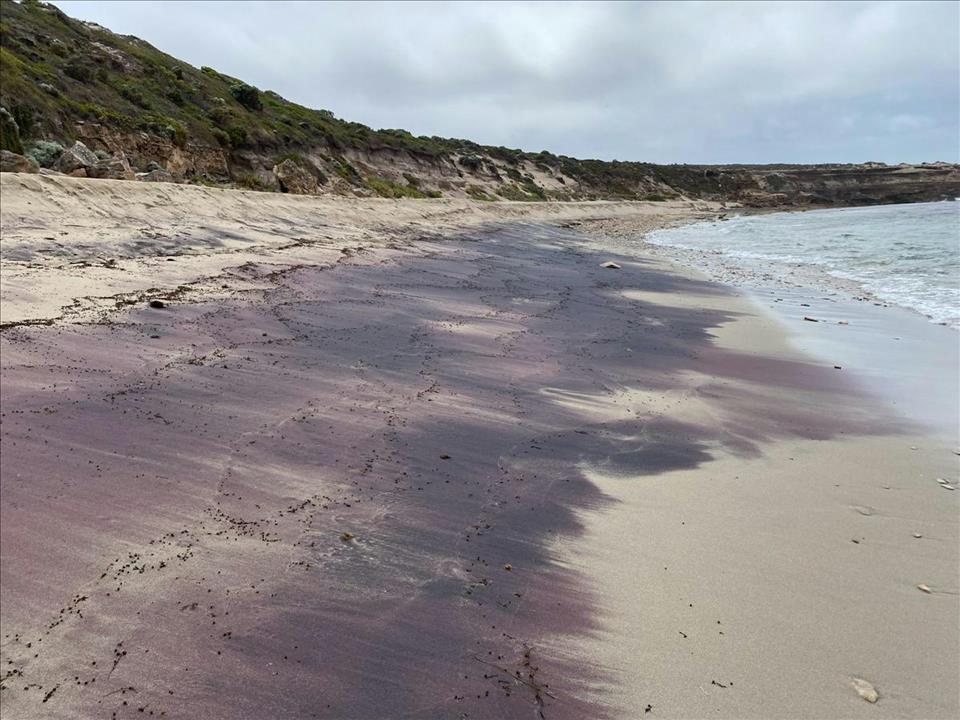
How We Solved The Mystery Of The Pink Sand On South Australia's Beaches Podcast
In this episode of The Conversation Weekly podcast, we speak to geologist Sharmaine Verhaert about the discovery and what it's revealing.
It all started with a routine field trip in 2021. Two University of Adelaide scholars, Stijn Glorie and Martin Hand, took their undergraduate geology class to a nearby beach called Petrel Cove, along the coast of the Fleurieu Peninsula in South Australia.
They were intrigued by the patches of pink sand they found there. This sand was made up of a rock called garnet that forms deep inside the Earth's crust, in a process similar to diamonds.
They decided to take samples back to their lab, where Verhaert works as a PhD student. The geologists knew the pink garnet sand couldn't have formed on the beach, which lacked the right geological conditions, and also couldn't have travelled far by sea as it would have been destroyed by long exposure to the ocean.
Verhaert used a process called isochron dating to analyse the approximate age of the garnet rocks – including a technique developed at the University of Adelaide that combines laser analysis with a mass-spectrometer. She explained:
The garnets didn't match the ages of other known deposits in South Australia, so Verhaert and her colleagues began looking elsewhere:
Traces of GondwanaThis glacial movement, originating from the Transantarctic mountains in East Antarctica, left deposits along the beaches in South Australia. And it turned out that some of these deposits, at Hallet Cove conservation park and Kangaroo Island, matched the age of the garnets found at Petrel Cove.
The Transantarctic mountains of East Antarctica. Shutterstock
There was just one problem with this conclusion: prior geological analysis had shown the Transantarctic mountain range, which divides East and West Antarctica, is too young to be the source of the pink sands.
To hear how Verhaert and her colleagues traced the origin of the garnets back to another mountain range which they now believe is buried under the ice in Antarctica, listen to The Conversation Weekly podcast.
This episode of The Conversation Weekly was produced by Katie Flood, Gemma Ware and Mend Mariwany. Sound design was by Michelle Macklem, and our theme music is by Neeta Sarl.
You can find us on Instagram at theconversationdotcom or via email . You can also subscribe to The Conversation's free daily email here .
Listen to The Conversation Weekly via any of the apps listed above, download it directly via our RSS feed or find out how else to listen here .

Legal Disclaimer:
MENAFN provides the
information “as is” without warranty of any kind. We do not accept
any responsibility or liability for the accuracy, content, images,
videos, licenses, completeness, legality, or reliability of the information
contained in this article. If you have any complaints or copyright
issues related to this article, kindly contact the provider above.


















Comments
No comment